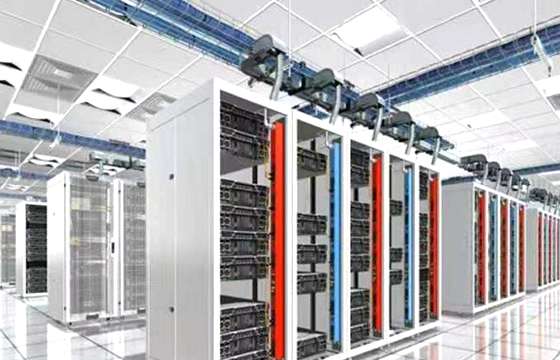

The IDC data center computer room is an industry evaluation standard created by the Uptime Institute for evaluating data center infrastructure construction methods. The hierarchical classification system provides a consistent evaluation method for the data center industry, which can evaluate various data center facilities based on expected performance or uptime of the computer room infrastructure.
Data center equipment room facilities, network communications, storage equipment, equipment room power supply, cooling system, backup resources, and other facilities, the higher the level of the data center, the higher the performance of the data center is divided into 4 levels, namely Tier1, Tier2, Tier3, and Tier4. The data center level is T4>T3>T2>T1. The following are the four levels of the data center computer room.
IDC data center computer room construction T1, T2, T3, T4 grade standard introduction diagram
Introduction to T1, T2, T3, T4 grade standards for IDC data center computer room construction
Tier I (Tier I)-Infrastructure data center computer room: no redundant facilities (availability of 99.67% availability, up to 28.8 hours of downtime per year)
The data center provides computer room infrastructure to support information technology beyond the office environment. The T1 data center infrastructure includes a space dedicated to IT systems; uninterruptible power supplies (UPS) to filter power spikes, voltage dips and momentary power outages; dedicated cooling equipment that will not shut down at the end of normal office hours; and Engine generators to protect IT functions from prolonged power outages.
Tier II-redundant capacity facility data center computer room: with redundant facilities, (availability of 99.75% availability, up to 22 hours of downtime per year)
The T2 data center computer room facilities include all T1 level functions and add redundant key power and cooling components to provide selected maintenance opportunities and increased safety margins to prevent IT processes from interrupting the computer room infrastructure equipment caused by failures. Redundant components include power and cooling equipment, such as UPS modules, cooling equipment, and engine generators.
Tier III-can simultaneously maintain the data center computer room: multiple channels are available, only one path is in operation, with redundant facilities, and can be maintained simultaneously (availability of 99.98% availability, up to 1.6 hours of annual downtime )
The T3 data center includes all T1 and T2 functions and does not need to be shut down for equipment replacement and maintenance. Redundant transmission paths for power and cooling are added to the redundant key components of the T2 data center so that each component needed to support the IT processing environment can be shut down and maintained without affecting IT operations.
Tier IV (Tier IV)-fault-tolerant data center computer room: with redundant equipment and fault tolerance, (available for 99.99% availability, up to 0.8 hours of downtime per year)
The T4 data center infrastructure is built on the T3 level, adding a fault-tolerant concept to the computer room infrastructure topology. Fault tolerance requires that all power and cooling components are 2N fully redundant. If any single power supply or cooling infrastructure component fails, processing will continue without interruption. The only failure of components from two different electrical or cooling paths can affect IT processing.
Which level of data center should you choose for your business
For businesses that can tolerate occasional server network downtime during normal business hours or weekends, T1 and T2 data centers are usually sufficient. For those companies that need 7*24 uptime, such as airlines, e-commerce companies, financial companies, online game companies, etc., who have higher requirements for the online networks, usually choose T3 or T4 data center.
来源:香港机房